
Women Surgeons and Women Artists “History, Power, Challenges and Opportunities”
*Corresponding Author(s):
Liselotte MettlerDepartment Of Obstetrics And Gynecology, University Clinics Of Schleswig Holstein, Kiel, Germany
Tel:+49 1512 5252549,
Email:profmettler@gmx.de
Meenu Agarwal
Department Of Obstetrics And Gynecology, Ruby Hall Clinic, Pune, India
Tel:+91 9822936970,
Email:drmjainagarwal@hotmail.com
Abstract
This article was written after “women’s surgeon lunch meeting” was organized by European Society of Gynecological Endoscopy (ESGE) during their annual conference in August 2019 at Thessaloniki, Greece. All the speakers for this meeting were women and to our surprise there were more than 50% men in the audience. This article describes the challenges faced by women in the field of medicine and art to be the forerunners in their respective fields. The gender biased patriarchal society coupled with the physiological burden on women to birth and societal expectations to be the primary parent to raise children have been some of the reasons for women to face more challenges as compared to their male counterparts. Women have come a long way and we narrate the experiences of the women as surgeons and as artists. Prof Liselotte Mettler was crowned with the honorary membership of Berlin obstetrics and Gynecological society in the same hall where the audience, once, was addressed as “Gentlemen” as there were no women in the august audience at that time. This progressive and optimistic article will acts as a spokesperson for women in all fields from all over the world.
HISTORY AND INTRODUCTION
From a time, where women were worshipped as goddesses, to being burnt on stakes for possessing the art of healing, to the modern world, the heritage of women as healers goes back to ancient history. Over this period, their journey has not been smooth. Rather it has weathered several fluctuations influenced by different religious, social and scientific influences. How was it in the ancient era? In ancient Egypt, Goddess Isis was worshiped for her great healing prowess. The school of medicine in the city of Isis, admitted only women as teachers and students, for training in childbearing issues. Illustrations of women as surgeons and healers in the tombs and temples of Egypt, underlined the fact that women as practitioners and healers were widely accepted, revered and praised by the society.
Ancient Greeks worshipped Goddess Athena, a woman who was believed to cure blindness. A renowned Greek physician, Galen, recorded the journey of women who not just provided obstetrical care, but also performed surgeries, took care of patients and taught medicine. The “medicae” were female physicians in Rome, and they managed busy practices and were on equal footing with their male counterparts. Greek goddesses were good archetypal figures because of their exaggerated personalities (Figure 1).
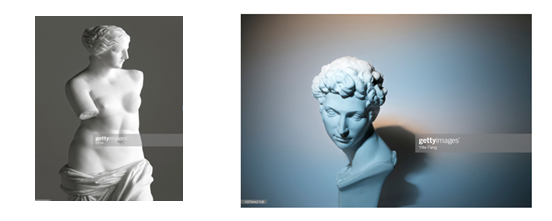 Figure 1: Venus of Milo.
Figure 1: Venus of Milo.
Despite their immortality and similarities to modern day superheroes, they were still plagued with personal flaws and negative emotions which caused destruction in their lives and the lives of other gods and mortals. This position of women in the field of medicine saw a significant declension when the Roman Empire disintegrated under the pressure of invading barbarians. The rise of the Church, stressed the inferiority of women in society, subjecting them to their houses. Art, literature and pan medical sciences suffered during the dark ages. Italy, during this time, still encouraged women to pursue academic and literary careers, opening their doors to women from a vast multitude of European and Asian countries. But, contrary to what many think it was in the time of the Renaissance that the witch hunts were the more intense in the European subcontinent. Women were forbidden from studying medicine and any skill in healing was assumed to have been obtained from the devil. Such female healers and midwives were frequent targets of witch hunt and burnt on stakes (Figure 2) in public squares. As a result, women were edged out of the medical practice and lost access to formal education.
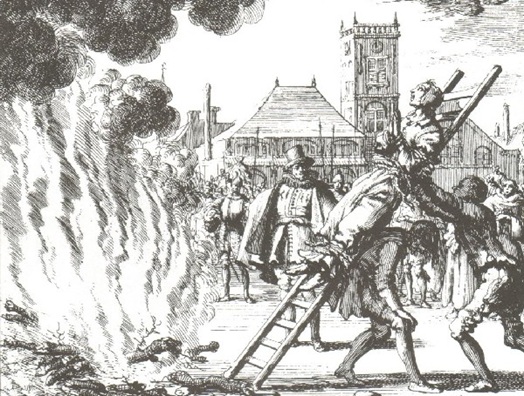 Figure 2: Execution of anne henricks amsterdam 1571.
Figure 2: Execution of anne henricks amsterdam 1571.
However, it was only after the feminist movement that the witch hunt came out of the dungeons where it had been relegated [1]. Feminists understood that hundreds of thousands of women could not have been massacred and subjected to the cruelest tortures without having threatened the power structure. They also realized that such a war against women waged over more than two centuries, was a turning point in the history of women in Europe. Men tortured the "Bitch Witch of the Devil" and burned them when they not died before. Sometimes it was their own annoying ex-wives or lovers. The infamous drowning test (the poorly women tied up was thrown into the water if they don't drown it was proof that they were witches) was conducted. This phenomenon had to be revisited if we wanted to understand the misogyny that still permeates institutional practices and male-female relationships.
In Egypt and France, the passage of licensure laws and formation of guilds pushed women further away, from the practice of medicine. Midwifery, a woman’s arena was taken over by men by the 17th century. As an example, in India, women have been worshipped as Goddess and healers, but the first lady doctor graduated only in 1886, from the university of Pennsylvania, to return to India and practice medicine. Even in the world of art, women were pushed to the status of being objectified for the art of men. While women posed for masterpieces, most men created artworks. They were often portrayed as vain subjects, concerned with the matters of the house, vanity and beauty, without knowledge of the worldly matters. In 1984 a group of anonymous American female artists, known as Guerrilla Girls, create a range of activist poster (Figure 3). “Are all recognized artist coincidently male? Are women just not capable of being great artist, or were women disadvantaged in the world of art history?”
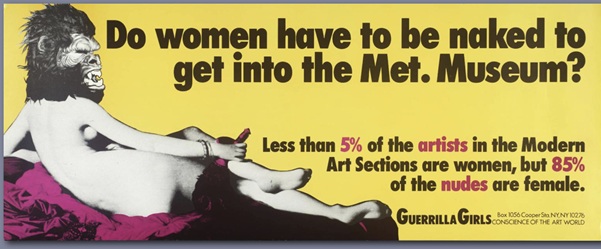
Figure 3: Guerrilla girls- met museum 1984.
The Victorian debate helped pave the way for women back into the academic world. The drive to reclaim their place back in medicine began, in the 19th century, thanks to several enterprising women. At the same time, through the same difficulties, women artist needed faith to exist. (Figures 4).
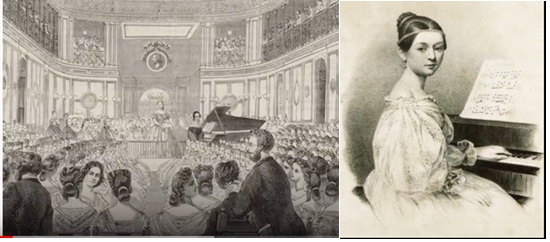
Figure 4: Virtuoso Clara Wieck-Schuman 1819-1896: “There was a time when I thought I had a creative talent, but I came back from this idea. A woman should not pretend to compose. None yet has been able to do this, why would I be an exception? It would be arrogant to believe that, it is an impression that only my father once gave me. "[2].
As a good precursor of feminism, initially predestined for a medical career, Frida was one of the few girls admitted to medical school, only 35 out of 2000 students, a finding that deeply alarmed her. Forced to abandon her studies after her terrible accident, Frida devotes herself to painting (Figure 5) partly because painting her suffering helps her to overcome her trauma, but also because she wants to work and earn a living independently. Frida systematically rejects the traditional role of women, especially in Catholic and conservative Mexico [3].
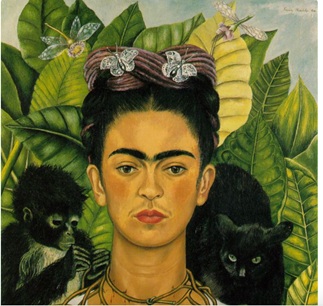 Figure 5: The Painter Frida Kahlo 1907-1954: “I don’t follow the same path as all the other Mexican women, submissive, silent. No, I want to travel, study, I want freedom and pleasure. All pleasures.”
Figure 5: The Painter Frida Kahlo 1907-1954: “I don’t follow the same path as all the other Mexican women, submissive, silent. No, I want to travel, study, I want freedom and pleasure. All pleasures.”
Still now, we have to face not only objective obstacles (family building and the-care of them), but we have to erase our secular subordinate role of servant, of support and of asserting that finally became registered epigenetically, deep into the collective unconsciously by Soraya Chemaly [4].
Reviewing the life story of the French sculptor Camille Claudel (1864-1943) in the light of Soraya Chemaly makes us apprehend her so-called “madness” in another way. What is the part of the rage, of the frustration, of the feeling of injustice on this “illness”? (Figures 6 & 7).
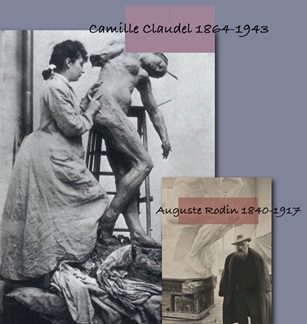 Figure 6: Camille claudel sculptor.
Figure 6: Camille claudel sculptor.
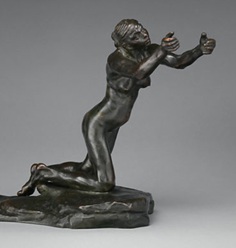 Figure 7: The implorer camille claudel.
Figure 7: The implorer camille claudel.
How to accept to disappear from the scene under the sole pretext that your mentor is no longer your lover? How to endure 30years of psychiatric internment when one has been considered as the best pupil of the master, when one has done a number of works allotted to him? The anger of the women was certainly at the time even more than nowadays read as synonymous with madness… unlike the wrath of man that enhance their power and inspires respect [4,5]. The advent of modern surgical training brought to North America by Halstead, posed to be an arduous journey for women, who were often referred to as the “beardless” lads. The prevailing view still believed that women were unsuitable for the profession of medicine.
When Robert Virchow in 1898 in Berlin addressed an audience of medical students and doctors to present his innovations he said. “Gentlemen, through this lens you see the world”, He was right as in his time there was not a single women in his audience at the charity in Berlin. This has changed in the 20th century. In 2019 I, Liselotte Mettler, received the honorable membership of the Berlin Society of Obstetricians and Gynecologists in the same lecture hall and many females were present. Medical colleges around the world open to women saw in the beginning a steep decline in attendance. Slowly women’s exclusive medical colleges merged with male colleges, anticipating equality. But co-educational schools tended to have less prestige and these colleges reduced the number of women enrolling into medical courses (Figure 8).
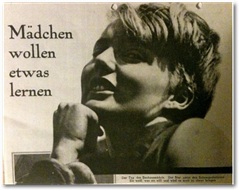 Figure 8: Newspaper “Die Woche” January 1930, 3 pages of report about the women of Bauhaus school [6].
Figure 8: Newspaper “Die Woche” January 1930, 3 pages of report about the women of Bauhaus school [6].
Most male and female surgeons want to build a successful professional life and a family. At the time that male surgeons work hard to master their art, their feminine colleagues have to be one step behind because it’s time for them to find the right partner and to be pregnant. Women pay the price of such very long formation in having less children that their male colleagues. That mean that most of the time they have to make a choice between ultra-specialization and family. Leader position in the OR is for sure an ultra-specialization…
So, surgery was believed to be male dominated in the whole world and it can be quite daunting and discouraging for a woman to make her place. More than the working hours, the “macho” attitude [7,8]. Including the yelling and humiliation, could be off putting for female surgeons and residents. Monica Morrow as Storyteller in the last ASCO meeting said, “Surgery is Never Elegant When Women are in the OR” and the National Survey of Sexual Harassment among Surgeons by A. Nayyar & coll [9] relates to similar issues (Figure 9).
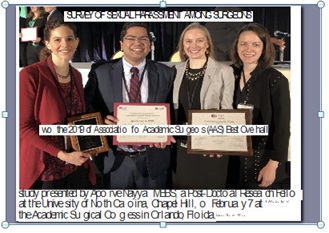 Figure 9: Sex harassment survey [10].
Figure 9: Sex harassment survey [10].
Above all, skepticism from patients and incompatibility with family life, are fueling the destiny of women in surgery. There are also publications mentioning male surgeon’s attitudes to be associated with reoperation and readmission rates of patients [8]. In the 1970s, the rise of the feminist movement and affirmative action, lead to empowerment of women and created environments more conducive to women becoming physicians and surgeons. Yet, still female physicians lag in income and are under-represented in research and leadership positions.
Women still don’t receive similar performance ratings, mentorships and encouragement in surgery as in other specialties. A lot of surgical instruments were not designed with smaller operators in mind. Being physically “less strong” than men, poses a physical barrier for women looking to practice surgery. Women working in the male dominated world, for almost 18-20 hours a day, feel “masculinized”, like their male peers. This highlights the fact, that women are considered incapable of working long hours and facing the challenges posed by a surgical residency and career.
As what we notice in the artistic world, men want to keep the pole-position on stage, (Figure 10) as well and they can be very aggressive when they feel that women are better. In 2019, I (Pascale George) had a very bad experience, we had a new WhatsApp-group in our unit, and I posted a short video where I was dissecting the internal iliac artery, the video was very nice showing how it is possible to clamp the uterine artery safely just next to a very big myoma (Figure 11), you know what happened? My dear oldest male colleagues threw me out of the group after having copiously abused me, This was 2019,…. in 2000 in another place, in Belgium, after being insulted in many ways, l was fired from the service … for equivalent reasons. In both situations nobody said a word against such injustice… “scapegoat syndrome” well known with the witch …
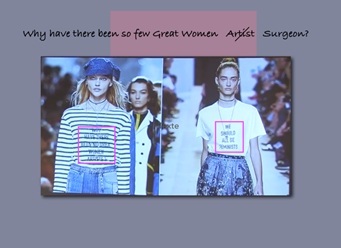 Figure 10: Feminists.
Figure 10: Feminists.
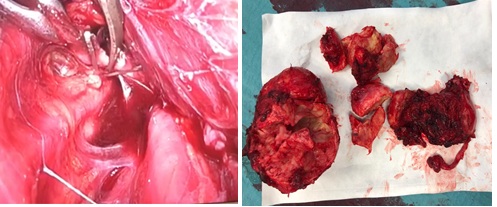 Figure 11: Clamping of the uterine artery in an open case of cervical cancer surgery.
Figure 11: Clamping of the uterine artery in an open case of cervical cancer surgery.
While men begin, their careers unencumbered by family pressures, women often hide the fact that they have children and family issues. Program directors may try to avoid females planning on having children in the near future, for the fear of long “maternity” leaves. From early on, they are often burdened with family obligations. There is “culture” that discourages women from pursuing careers in surgical branches. The structure of medical training has changed little since 1960’s, when almost all surgical residents were males, with little to absent household duties. Support for those trying to balance home and work life hasn’t kept pace with changing demographics, nor has the division of domestic labor shifted to reflect the rise of women in the medical work force. Female surgeons and physicians are more likely to cut back professionally, if they have families and children. This makes them a little bit less desirable to the residency program directors in the first place. In addition to these practical considerations I (Pascale George) can share what our Professor says to me when I came to him in 1983 in order to let him know my desire being involved into the gynecologic-residency: “I do prefer to take male resident… women are good keepers but not sowers. I need sowers.”
Now the mentality is changing. Women are trying to be more dedicated and trained in the field of surgery. They are more sought after, than their male counterparts, both by residency programs and patients, especially those with breast diseases and obstetrical complaints. Research reveals that women are equally good or bad surgeons Generally, the best women in the craft become surgeons, in a typically male-dominated field.
A lot of women find it a heady and powerful experience to be a Surgeon. Being in charge in the operating theatre can be exhilarating for them. Of course, surgical immediate results and the technical aspects may be challenging, but carry their own allure for surgeons, males and females alike. The decision to enter such a demanding field should, however, be open for males and females alike.
MEDICINE STYLES ITSELF AS BOTH ART AND SCIENCE
In the times of Leonardo da Vinci and Rubens the man represented the anatomy, the female the object in art. Today the surgical robot company “Intuitive” ex-plains why a Robotic surgical system replaces “chopsticks” used in conventional laparoscopic surgery (Figure 12). We know that art advances healing, cheers up minds. Art is used by all of us in medicine more or less and accepted as helping to understand situations and conditions. Pictures and paintings are used in hospitals to give joy and happiness.
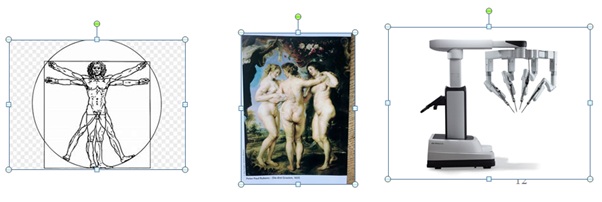 Figure 12: Art and science: from the da Vinci Code, a painting of Rubens to 20th century surgery.
Figure 12: Art and science: from the da Vinci Code, a painting of Rubens to 20th century surgery.
GENDER HIERARCHY
We, authors are spanning the ESGE net from the Baltic Sea to the Mediterranean Sea and to the Indian Ocean. While science creates new knowledge and treatments, art helps to recognize another’s humanity. Women are known to have an innate artistic capacity- a definite asset to a surgery. It allows them to look at things, the way other people have not or cannot, over the horizon. They can connect the dots that aren’t always next to each other. However we do not at all want to fight for equality just recognition and we need to get rid of the archetype of gender hierarchy (Figure 13).
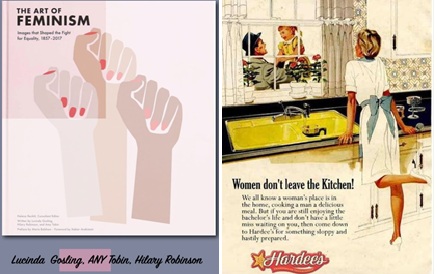 Figure 13: Left: shapes the fight for equality. Right: Archetype of the gender hierarchy.
Figure 13: Left: shapes the fight for equality. Right: Archetype of the gender hierarchy.
CONCLUSION
Women have always been an integral part of the art, whether as creators and innovators of new surgical techniques and procedures or as contributors to pre-existing ones they have faced challenges due to gender biases and had to overcome difficulties in training and gaining recognition. They have now come forward as such strong voices in today’s world, that they are not just making their own place but also highlighting the stories of those forgotten in the pages of history. From being respected as healers with special powers from deities, to alleged witches and intruders into the male medical establishments, to respected peers once again, the journey has not been very accessible and undemanding. Despite, being hindered by lack of educational opportunities, women have persisted throughout the span of history and shifting social, religious and scientific ideologies to make great strides in the field of medicine. As we enter the 20th millennium, we see women making spectacular advances. It is a tough journey, and women have had to be tougher to survive the weathering and challenges thrown in their paths. We will need more women in leadership and mentorship roles to help with the larger cultural shift that seems an indispensable part of integrating women with the surgical field. The disparities in gender pay, promotion, mental health and the shift from a boy’s club to one with more women, will have to be closed as more women step into the world of surgery and medicine [11]. The times of fights for feminism have gone (Figure 13).
And like they say: “some women feared the fire, while some became the fire.” Women rose out of the flames to take everything that was thrown in their paths in a stride. We love to live in peace, equals rights and love with men to be happy. Together we have, to change our world, to create the conditions that will allow young generation of women to succeed in both professional and private life.
REFERENCES
- Chollet M (2019) Sorcières, La puissance invaincue des femmes. Prix de l’essai-psychologies Fnac.
- Schumann C (2019) Or the difficulty of being a woman artist and composer in the XIX sc. S Siegel RTBF 09-2019.
- D Connaissances (2018) Frida Kahlo: Militante historique du feminism. AP. D Connaissances.
- Chemaly S (2018) Rage Becomes Her. Atria Books, Washington, D.C., USA. Pg no: 416.
- Delbée A (1998) Une Femme Camille Claudel. Fayard.
- Rössler P (2019) Bauhausmädels. A Tribute to Pioneering Women Artists. Taschen,
- Nayyar A, Scarlet S, Strassle PD, Ollila DW, Erdahl LM, et al. (2019) National Survey of Sexual Harassment Among Surgeons. Academic Surgical Congress.
- Kadzielski J, McCormick F, Herndon JH, Rubash H, Ring D (2015) Surgeons' attitudes are associated with reoperation and readmission rates. Clin Orthop Relat Res 473: 1544-1551.
- Morrow M (2019) Storyteller ASCO meeting.
- Delvigne A, Becu L, van Wiemeersch J, Bossens M, Vandromme J (2018) More women gynecologists in Belgium: assessment of changes in the work-force-a survey. Arch Gynecol Obstet.
- Gosling L, Robinson H, Tobin A, Balshaw M (2018) The Art of Feminism. Chronicle Books LLC, San Francisco, USA.
Citation: Mettler L, George P, Agarwal M, Ussia A, Maia S, et al. (2020) Women Surgeons and Women Artists “History, Power, Challenges and Oppor-Tunities”. J Reprod Med Gynecol Obstet 5: 062.
Copyright: © 2020 Liselotte Mettler, et al. This is an open-access article distributed under the terms of the Creative Commons Attribution License, which permits unrestricted use, distribution, and reproduction in any medium, provided the original author and source are credited.

